With help from ‘More Blood, More Tracks,’ and the insight of several insiders, here‘s an expedition into the making of a masterpiece.
Bootleg Series Producer Steve Berkowitz, ‘Blood On The Tracks’ Minnesota players Kevin Odegard & Billy Peterson, liner notes writer Jeff Slate, and songwriter-producer Joe Henry, discuss the truth and myth of this landmark work.
Videos by American Songwriter

“Idiot wind
Blowing like a circle around my skull
From the Grand Coulee Dam to the Capitol
Idiot wind
Blowing every time you move your teeth
You’re an idiot, babe
It’s a wonder that you still know how to breathe …”
From “Idiot Wind,” by Bob Dylan
“Okay, ‘Idiot Wind,’” Dylan said during our 1992 interview. “Now, obviously, if you’ve heard both versions, you realize, of course, that there could be a myriad of verses for the thing. It doesn’t stop. It wouldn’t stop.”
He’s talking about his own inclination, when writing a song, to write dozens upon dozens of verses – “too much and not enough,” as he put it – and still feel incomplete. But is it really obvious that a song like this gets started and never stops? Who else but Bob Dylan could create something as vast, timeless and powerful as “Idiot Wind” in its fullness, and still find it lacking?
(Okay, maybe Leonard Cohen, sure. But who else?)
“Where do you end?” he asked. “You could still be writing it, really. It’s something that could be a work continually in progress.”
A work continually in progress. In that idea we find both the genius and madness of this man, dynamics that are often aligned. Like Tennyson, who Dylan cited as an example of an artist with the same affliction (obsessively revising and reworking a song even after it is published), Dylan has written many epic masterpieces, but rather than rejoice in their greatness, he yearns instead for some solution, some method by which to make it even better.
Had he written only one song with the power of “Like A Rolling Stone” or “Isis” or “Idiot Wind,” he would still matter. A lot. Yet through these many decades he often finds himself in a season of abundant creation, so plugged in to the source that the songs, as he said, never stop. It resulted in some of the strongest songs he ever wrote, and ones – like “Idiot Wind” – which sadly resonate now more than ever. Has the wind ever blown quite as intensely as now?
It brings to mind Arlo Guthrie’s great comment. “Songwriting,” he said, “is like fishing in a stream. You put in your line and hope you catch something. But no one downstream from Bob Dylan has ever caught anything.”
That seemed like the ideal opener for our conversation. Dylan, with a big smile, said, “Songwriting – what do I know about songwriting?” So I quoted Arlo, which Bob responded to with great laughter. So I got to the point. How did you do it? How did you catch so many?
“It’s the bait,” he said in classic Dylan-speak. An answer, metaphoric and enigmatic, like his songs, pointing towards the source without puncturing its mystery.
As to what type of bait led to the miraculous outpouring that became Blood On The Tracks, mysteries still abound. Created with unusually clear focus and patience over a handful of sessions at the end of 1974, it’s one of his most beloved and remarkable works. Unlike almost all the others, it’s a delightfully dimensional and unified song cycle, each song connected by detailed narratives told by the same narrator.
And though it’s a presumption many have shared, and which he and others have denied, it’s a cycle of songs that seems most transparently about him, and more focused on vividly projecting a personal narrative than his previous work. Many categorized it as his “divorce album,” which he’s dismissed. But though we know much is metaphoric and not to be taken literally, one can’t miss the point of lines like this, from “Idiot Wind”:
“They say I robbed a man named Gray and took his wife to Italy, he inherited a million bucks and when she died, it came to me, I can’t help it if I’m lucky,”
The release last year of the lovingly created More Blood, More Tracks: The Bootleg Series Vol. 14, produced by Steve Berkowitz and Jeff Rosen, goes a long way in shining a lot of light into the mysteries surrounding the album, those connected to both the writing and recording. This is a deep dive into that remarkable collection, appointed with answers from many in the know, including Berkowitz, as well as musicians on the sessions, Kevin Odegard and Billy Peterson (both who played in the Minnesota sessions), and some experts, including the liner-note writer Jeff Slate, and the great producer-songwriter Joe Henry.
Dylan’s dual missions in its creation come into focus here: first, to fully realize this portrait of the heart, and secondly to capture the singular character of these songs in the studio with simplicity and purity, and without any obstructions. More Blood grants us all-access to the sessions — both the good and the bad — which went into its making. And it allows us all to bear witness to a remarkable moment in time, unlike any in Dylan’s career, the making of a singular masterpiece.
More Blood is a Dylan completist’s dream, packed tightly with treasures. All the discarded takes of these songs are here, beautifully remastered, in the order they occurred.
Add to that a tremendous extra, a reproduction of every page in one of Dylan’s tiny 27-cent red notebooks. In these he wrote, revised and rewrote the intricately rhymed lyrics of these songs in tiny handwriting, like miniature hieroglyphics in ink. As vivid as the recordings themselves, these drafts reveal the torrent of language pouring out of him into complex constructs of meter and rhyme.
But they also provide the real story. These were not songs written in haste, or manically typed during endless hotel room nights, as in the past. These songs reveal an artist connecting so fully with the muse — or perhaps a team of muses — that he could mine this shining source again and again. It wouldn’t stop. Serious mining followed by serious refining.

Because the source — as songwriters know well — doesn’t do all the work. As songwriters know intimately, the job isn’t only about connecting with that muse, that source, that river of song. It’s about bringing those songs back into this physical world, and translating them into a language others can understand. Dylan’s challenge in recording these complex, dimensional beings was great. He wanted to get them right. Which is why he chose to re-record most of them after he’d finished the album.
But before he ever got to the studio, he devoted enormous time and focus to this mission. It’s the songwriter’s job to not only connect, but to then cull and refine, polish and shine. These pages show the extreme care Dylan brought to this work in the writing stage. Not only did he write almost all of these songs with elaborately intricate rhyme schemes, closer to Romantic poetry in their overlapping, interlocking rhymes than modern songwriting, he constantly reconstructed and reinvented finely-chiseled verses. Like a painter perpetually reworking a canvas, he never stopped, even after the album was done.
“…you’ll never know the hurt I suffered
Nor the pain I rise above
And I’ll never know the same about you
Your holiness or your kind of love
And it makes me feel so sorry
Idiot wind
Blowing through the buttons of our coats
Blowing through the letters that we wrote
Idiot wind
Blowing through the dust upon our shelves
We’re idiots, babe
It’s a wonder we can even feed ourselves …”
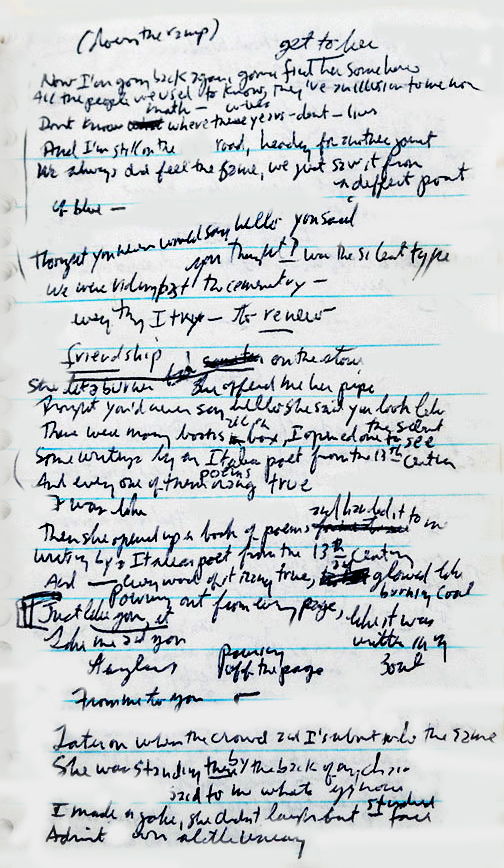
Asked for clues about what led to this, Dylan has offered two: the short stories of Chekhov, and painting lessons from Ukrainian-American artist Norman Raeben. From Chekhov, Dylan learned how to balance emotional, interior abstractions with physical imagery. Dylan uses Chekhov’s method of grounding abstractions in natural imagery, employing a rich interplay of exterior and interior, physical and emotional, in every song.
This fused with the wisdom shared by Raeben, then in his 80s, who not only changed Dylan’s thinking forever, he also gave him one of his greatest titles when he responded to Dylan’s paintings by saying, “Looks like you’re all tangled up in blue.” Raeben also enabled Dylan to defy time via the Cubist concept of showing past, present and future all together.
Like Picasso, who was also tangled up in a blue period that resulted in sorrowful paintings of street people, Dylan painted songs all connected in story, character, and even key. This set reveals that he recorded nearly every song in the same tonal color — E major. Although in the Minnesota sessions, he transposed the songs into higher keys, and they all were born from a haunting open-D tuning, with a capo on the second fret, thus E major. “Dylan approached this,” says songwriter and producer Joe Henry, “with the understanding that each song is but a single scene from the same movie. And as such, the whole that they add up to becomes more unified and focused.”
Unlike other sets in this Bootleg Series brimming with a dizzying array of songs, this one spans six discs, yet contains only 12 songs (three of which were ultimately discarded from the album). Dylan’s steely determination to capture the living essence of each song is stunning to hear, a mission that could only be completed in the traditional way: live performance.
“Let’s dispel the notion that this stripped-down recording is the opposite of production. The most naked studio recordings are still deliberate production decisions.” – Joe Henry
It all started, as did Dylan’s career, with the man solo: voice, guitar, harmonica, puncturing the wide-held belief that this began as a band album that got downsized. As liner-note writer Jeff Slate writes of these solo sessions, “Dylan was on fire and completely focused. We think of his sessions as rushed and shambolic. But these show a whole other level of preparation. To deliver the intensity and intimacy he’s delivering here, over and over, is truly remarkable.”
“It’s amazing to get a peak behind the curtain and see the entity form,” says Berkowitz. “[Dylan] didn’t make records, he made music. If the music was right, then he’s done it and moves on. He’s made his art. It’s very different from anyone else.”
Indeed, so deeply in the moment was he that he rarely wavered. “Soon as the red light was on,” says Berkowitz, “there were no bad Bob Dylan takes.” Rather than doctor them at all in the studio, he and Rosen presented each take with intentional purity. “We weren’t trying to redo the production from 1974,” says Berkowitz. “The goal was to reveal the sessions in an intimate manner, to get as close to him as possible. The singing, the phrasing, all of it is so right on,” says Berkowitz. “The guitar playing too. People rarely comment on his guitar playing, but it’s extremely dynamic and nuanced. As is the way he uses his voice and approaches the microphone to get deep inside the lyrics.”
“Let’s dispel the notion that this stripped-down recording is the opposite of production,” said Joe Henry. “The most naked studio recordings are still deliberate production decisions. The Freewheelin’ Bob Dylan wasn’t just his coffee house set, but a dynamic and calculated choice on behalf of singularity and inescapable intimacy. With Blood, the artist is reaching again for inescapable intimacy. The best vehicle for this kind of vulnerability … the solitude surrounding the performances is part of their ambient power.”
“It’s amazing to get a peak behind the curtain and see the entity form. Dylan didn’t make records, he made music.” – Steve Berkowitz
Perhaps wary of losing his vital connection with the essence of the songs, Dylan winnowed down the group to only one member — bassist Tony Brown, who provided a solidly soulful counterpoint — and the picture was complete. For the time being.
Dylan lived with the NYC sessions for months. With his son Jakob, then five, Dylan came to his farm outside of Minneapolis for the holidays, as he often did. He played the tapes for his brother, David, who suggested redoing some of the songs right there. A producer himself, David knew the best studio, Studio 80, and the best rhythm section, Billy Peterson and Bill Berg, both serious jazz cats who could play anything from Coltrane to Country.
“It’s kind of like a dream movie,” says Berkowitz. “Band in Minneapolis suddenly walks in. Are you guys going to do two sessions with Bob Dylan? What?! And they played great.”
Though the Minnesota musicians were uncredited initially, their place in history is now secure. “Bob was nothing like the distant enigma as he’s often portrayed,” Berkowitz continues. “Maybe it was ’cause he was home, but he was very warm. He made a point of getting to know all the musicians.”
“Suddenly, we’re playing with an icon,” says Billy Peterson. “[Dylan’s brother] David gave us no warning. But that was okay. We had a job to do and we did it. Dylan locked in with us, and the passion of his performances was staggering.”
“There was fire in that room, and also anger, heartache, redemption and prayer.”
– Kevin Odegard
Dylan’s aim to keep the tracks sparse is well-understood on this set, allowing us to hear takes he did with Eric Weisberg and Deliverance. Their take of “Simple Twist Of Fate” doesn’t gel. Yes, this is a first take, so the band had yet to settle in to find the right groove. The drummer rushes slightly, while the guitar plays conventional riffs as if this is any song. It isn’t. The narrator seems distant, telling the story from behind walls. Whereas Dylan wanted the singer closer, where you hear every word, every nuance, every trace of sorrow, joy or anger alive in his voice. It’s the sound of old-time radio, of a private, personal intimacy, a direct connect between the singer and listener.
And every one of them words rang true
and glowed like burnin’ coal
Pouring off of every page
like it was written in my soul
From me to you
Tangled up in blue.
“There was fire in that room, and also anger, heartache, redemption and prayer,” said Kevin Odegard, who not only played acoustic guitar, but suggested to Dylan they try “Tangled” in A, which they did on the take used for the album.
“[Dylan] was way into it,” says Billy Peterson. “He was home-boy, really into suggestions. He’d been hanging in New York with all those jazz cats, and he’d seen Monk and had a real performance attitude. He had to be in the moment, which I loved, because I’m a bebop jazz guy, and that is what matters most.”
It all began with “Idiot Wind,” which initially threw everyone but Billy.
“The first chord on ‘Idiot Wind,’ which is in a major key, is a IV minor,” he says. “Who does that? I thought it was the coolest thing I’d ever heard. It was desperate sounding.”
“’Idiot Wind’ was dissonant from the first run-through,” says Odegard. “Billy’s bass approach gave it shape around Bob’s determination. Berg started landing his snare at the tail end of the beat, which gave Bob room to elongate his lyric.”
The final album merged the best of the New York sessions, using the Minnesota versions of “Tangled Up In Blue” — in A — as well as “Idiot Wind.”

More Blood answers many questions we’ve had for years about the creation of this album. But one still remains. Given that Dylan has said that any contemplation of one’s legacy was bad luck and to be avoided, many have wondered what he thinks of this and the other sets devoted to his work. I asked an insider, who asked to remain unnamed, just how much attention did Dylan give these projects?
The answer was swift and simple.
“No attention whatsoever.”

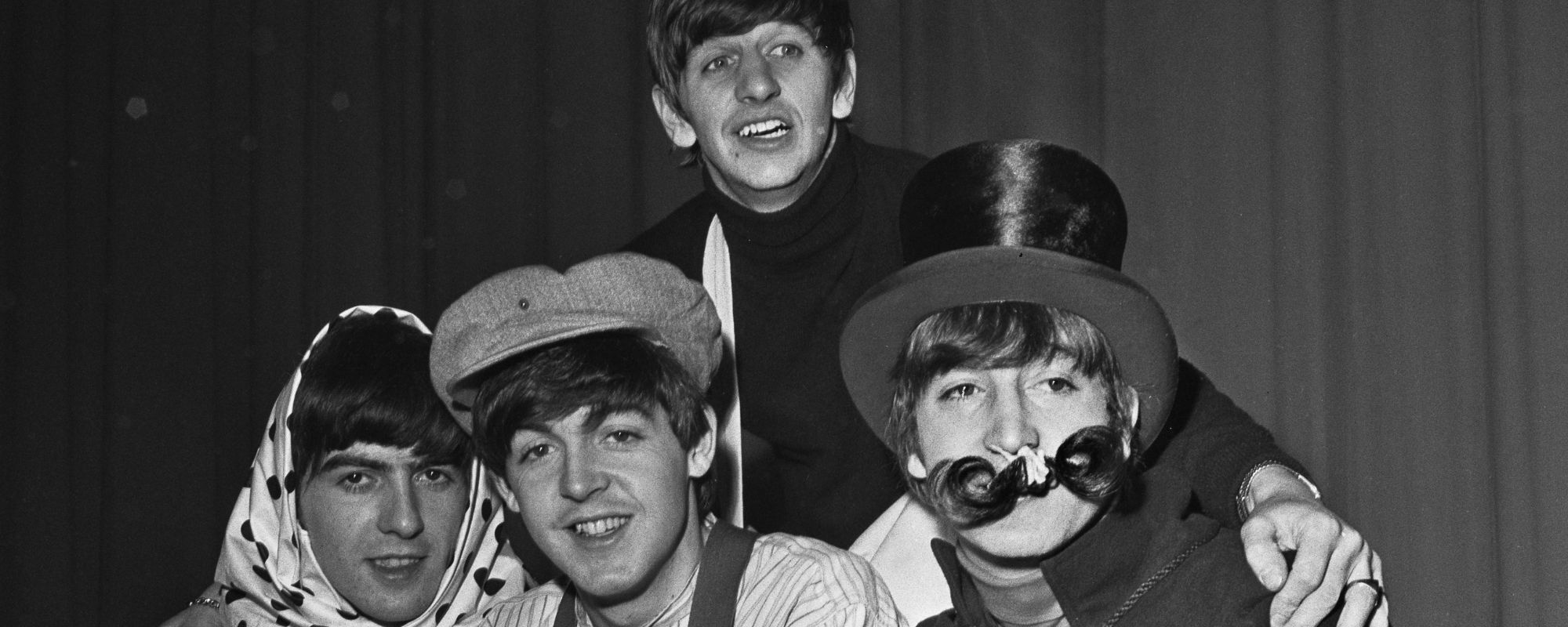
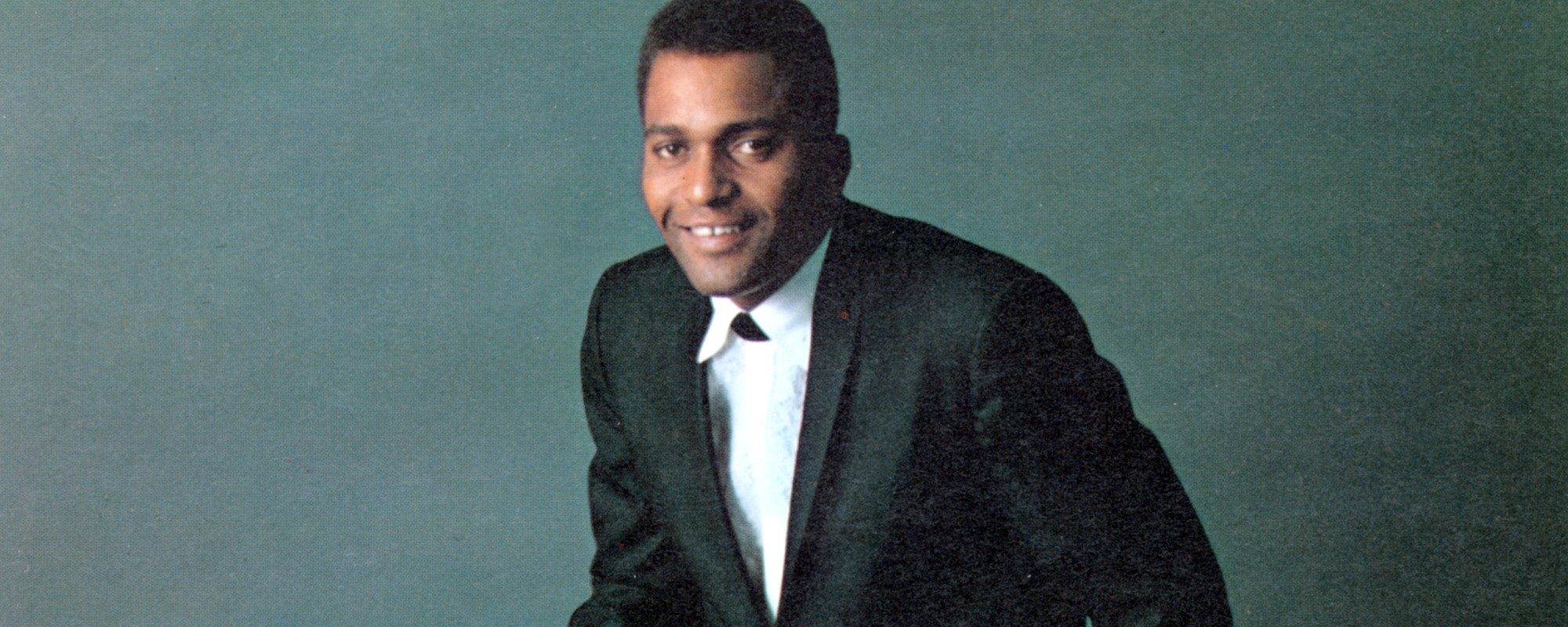
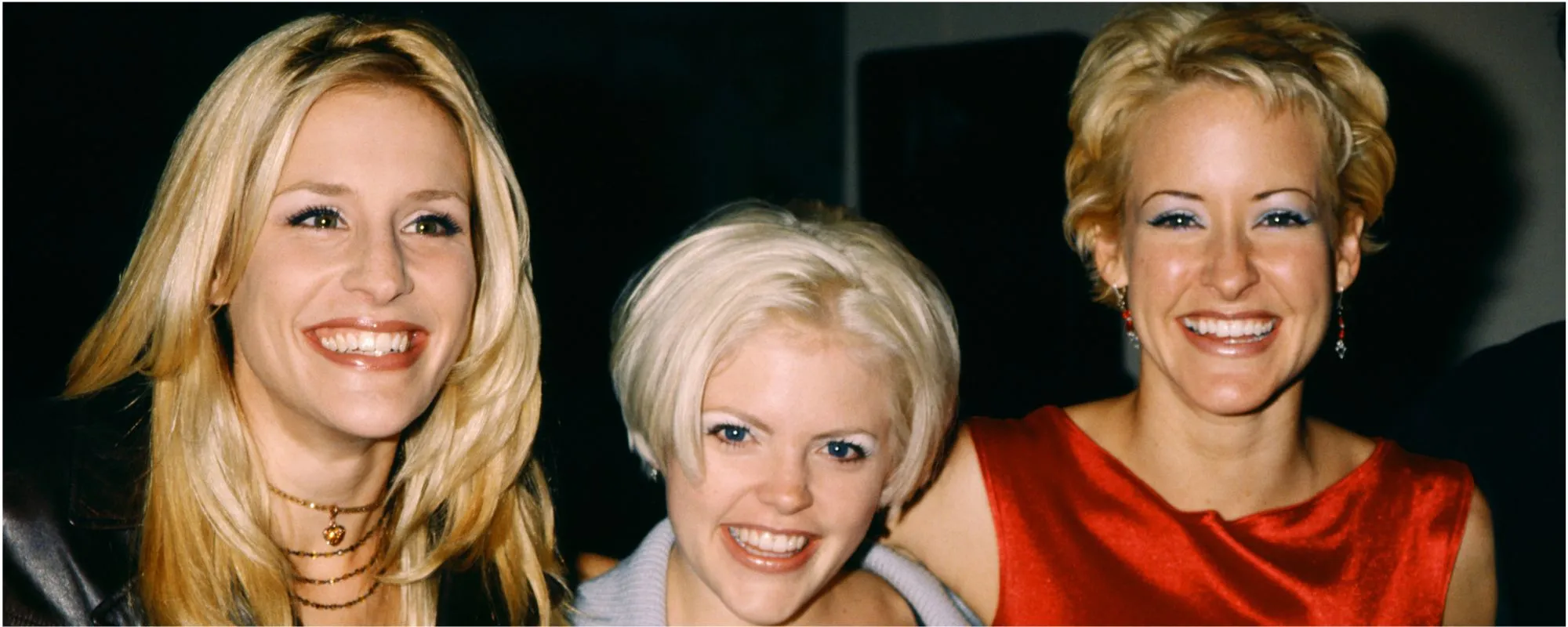
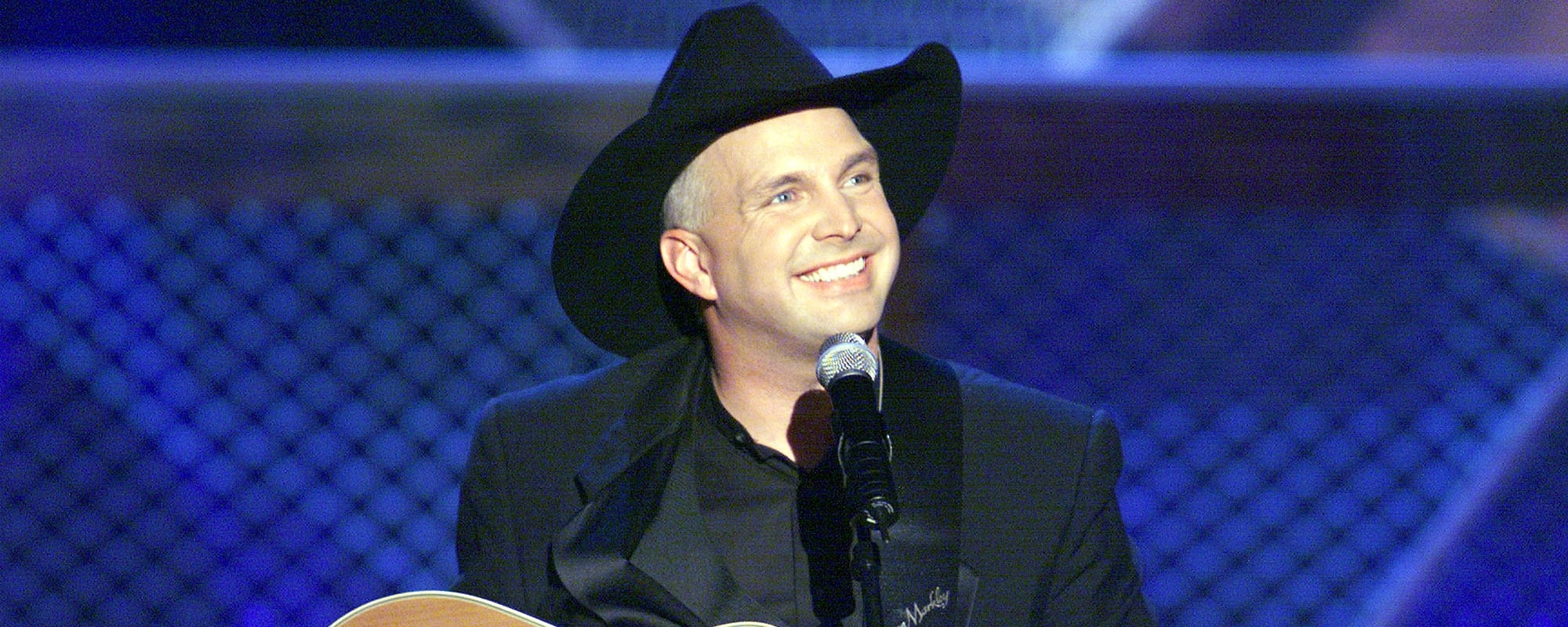


Leave a Reply
Only members can comment. Become a member. Already a member? Log in.